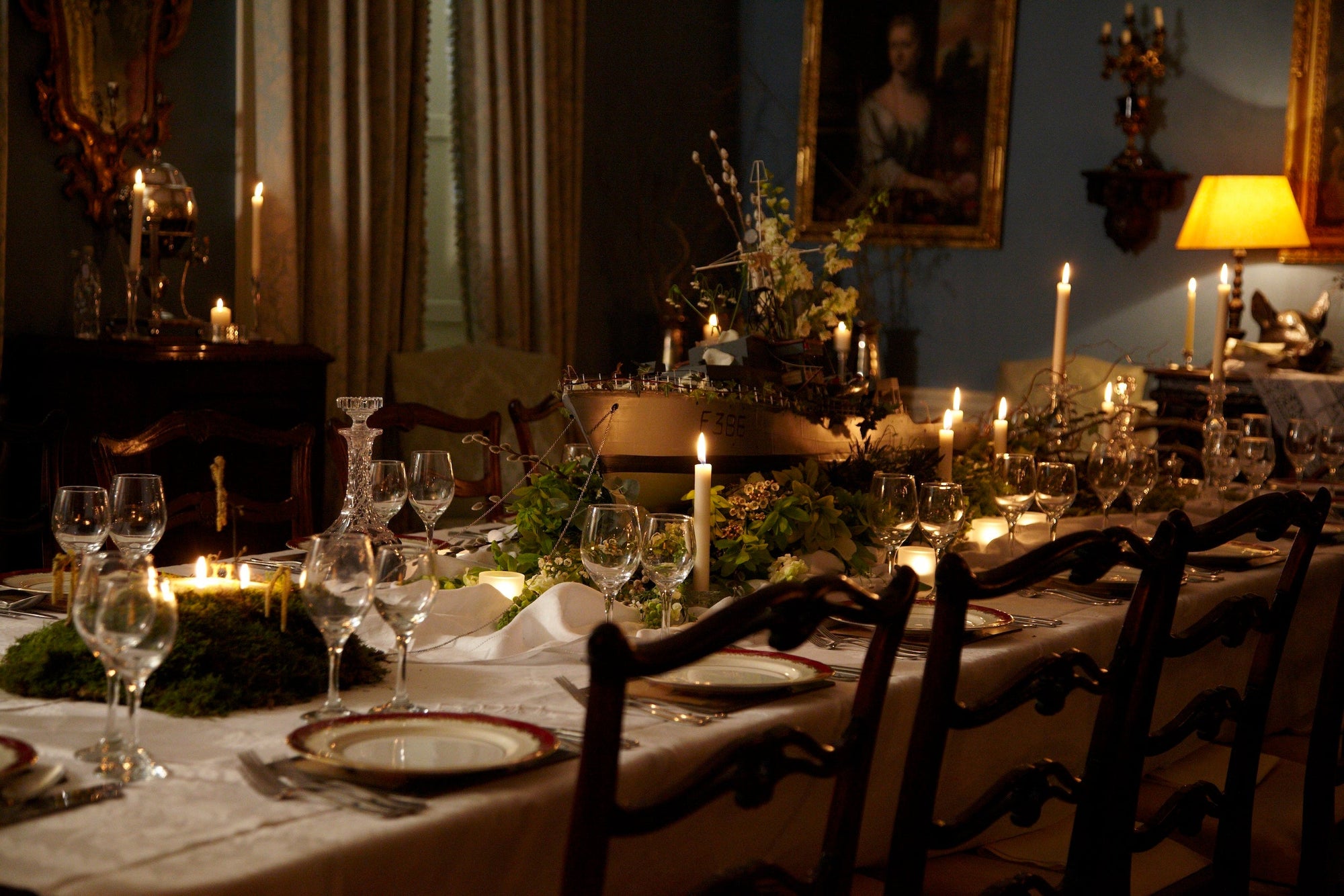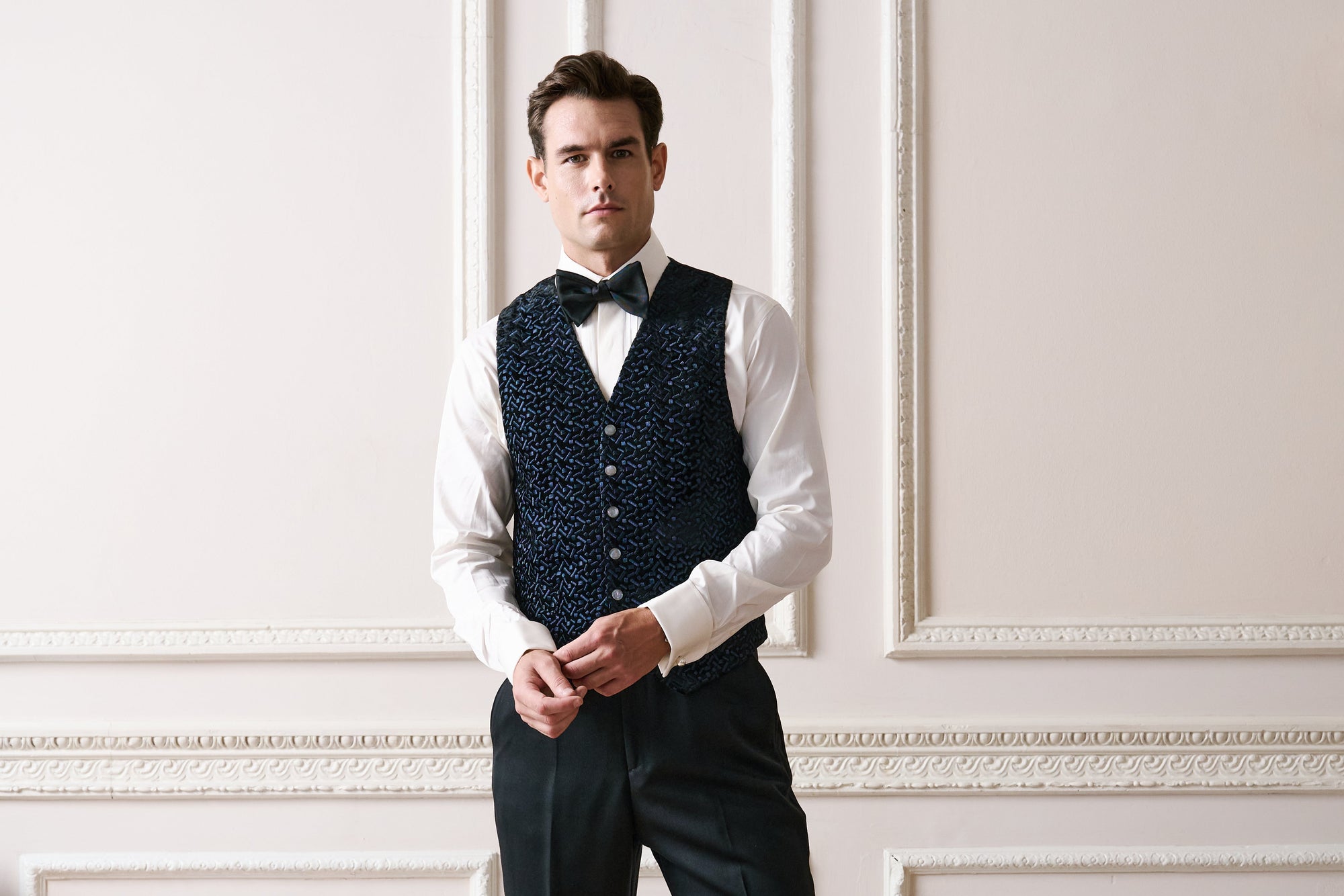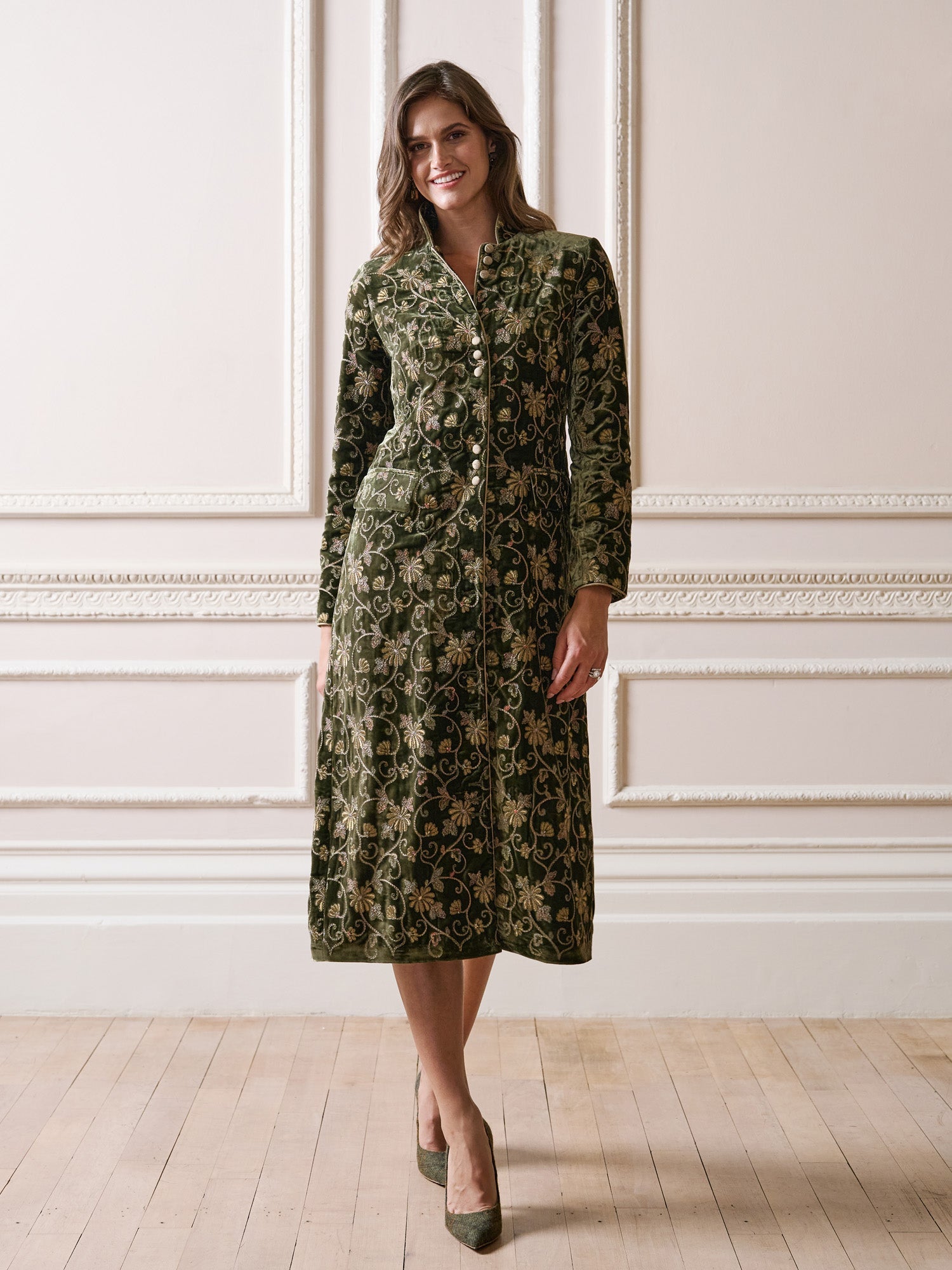Favourbrook had the pleasure of shooting our SS23 menswear and womenswear campaign at Kew Gardens, London, the Unesco World Heritage site on the south bank of the River Thames. For a collection that has been much influenced by the flora and fauna of the natural world, Kew was a perfect venue, with its sweeping gardens and stunning architectural glasshouses bristling to the gills with remarkable verdant foliage. Our womenswear collection in particular owes a lot to Mother Nature, specifically the world of botanics, and the richness of colour, pattern, and design of flowers.

The first gardens at Kew date back to 1759, when Princess Augusta, mother of King George III, founded a nine-acre botanic garden within the pleasure grounds at Kew. Three years later, William Chambers - the Swedish-Scottish architecture who designed Somerset House - built the Great Pagoda. Chambers was one of the leading Palladian-style architects of his day, but was also fascinated by the Chinese aesthetic, and so the iconic pagoda came to be.

It wasn't long before Kew started to become the epicentre for horticultural and botanical interests, for in 1768, the naturalist and botanist Joseph Banks sends seeds to Kew whilst on Captain Cook's voyage to the South Seas, and becomes Kew's first unofficial director on his return. Banks was something of a talisman for an era of new intrepid botanists who would begin to scour the world for new and amazing species of plants. One such chap was Francis Masson, Kew's first plant collector, who in 1772 travels to South Africa and returns with thousands of plants.

Plant collecting was not the stroll in the park it might at first seem. Botanists were often putting their lives in danger in parts of the world with little to no medical resources and often hostile locals. In 1788, HMS Bounty sets sail for Tahiti with two Kew gardeners and eventually collects 1,000 breadfruit plants, only for the crew to mutiny en route to Jamaica. It is of course the famous story of Lieutenant William Bligh, who along with eighteen loyalists were sett adrift in the ship's open launch. In a voyage recreated in recent times by former Special Forces soldier Ant Middleton, Bligh navigated more than 3,500 nautical miles in the launch to reach safety, and began the process of bringing the mutineers to justice.

Private until 1840, Kew Gardens were then transferred from the Crown to the Government, with new director Sir William Hooker opening them up to the public. The plants keep flooding in from all parts of the world, thanks to new invention of glazed Wardian cases to keep them alive on long voyages. Add to that is the Herbarium, built in 1853 and extended many times since then. It now holds over seven million species.

With the building of the Jodrell Laboratory in 1876, the Imperial Bureau of Mycology in 1930, and the Millenium Seed Bank in 1997, studies on plant pathology and genetics have made Kew Gardens one of the most important centres of botanical science in the world, attracting some of the greatest minds in the field, as well as inspiring generation after generation to study for Kew's Diploma in Horticulture, which was first introduced in 1963. Still to this days, tens of thousands of plant species are sent to Kew each year to further the field of research and help us understand more about this wonderfully diverse pillar of the natural world.












